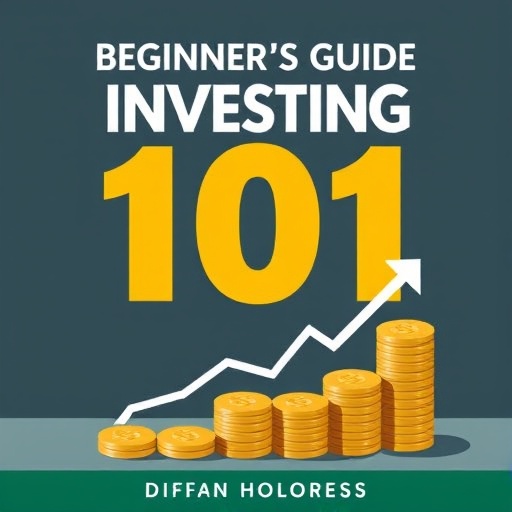Beginner’s Guide to Investing 101: Start Investing in Stocks and Mutual Funds
Investing can seem intimidating for beginners, but it is an essential step toward building wealth and achieving financial goals. This guide will help you learn the basics of investing and provide practical steps to start investing in stocks and mutual funds. Whether you want to learn how to invest in stocks or understand how mutual funds operate, this comprehensive overview will cover all the necessary information you need to embark on your investment journey.
What Are the Basics of Investing for Beginners?
What is an Investment?
An investment is essentially the allocation of resources, usually money, in order to generate income or profit. When you invest, you are putting your capital to work with the expectation that it will grow over time. This can take many forms, including stocks, bonds, mutual funds, real estate, and other investment vehicles. The primary goal of any investment is to achieve a return on your investment (ROI) that outpaces inflation and increases your wealth. Learning the basics of investing is crucial for beginners, as it lays the foundation for sound investment decisions in the future.
What is the Stock Market?
The stock market is a marketplace where investors can buy and sell shares of publicly traded companies. It serves as a platform for companies to raise capital by offering ownership stakes to investors. The stock market operates through various exchanges, such as the New York Stock Exchange (NYSE) and the Nasdaq, where stocks are listed and traded. As a beginner, understanding the stock market is essential, as it provides opportunities to invest in high-growth companies that can significantly impact your investment returns. Moreover, the stock market reflects economic conditions and trends, making it important for investors to stay informed about market movements.
How Do Mutual Funds Work?
Mutual funds are investment vehicles that pool money from multiple investors to purchase a diversified portfolio of stocks, bonds, or other securities. This diversification helps to spread investment risk, making mutual funds an attractive option for beginners who may not have the expertise or time to manage individual stocks. When you invest in a mutual fund, you buy shares of the fund, and your money is managed by professional investment advisors who make decisions based on the fund’s objectives. Mutual funds can offer exposure to a variety of asset classes, including domestic and international markets, and are a great way to start investing if you prefer a more hands-off approach.
How to Start Investing in Stocks as a Beginner?
What Steps Should I Follow to Invest in Stocks?
Starting your journey as a stock investor involves several steps. First, it’s essential to set clear financial goals that guide your investment strategy. Determine what you want to achieve—whether it’s saving for retirement, funding your child’s education, or building wealth. Next, consider your risk tolerance, as this will influence the types of stocks and investment strategies you choose. Afterward, you’ll need to open a brokerage account, which will enable you to buy or sell stocks. Choosing a reputable brokerage is vital; look for one that offers user-friendly online trading platforms, educational resources, and competitive fees. Finally, begin by researching stocks that align with your investment goals and start investing in stocks gradually, allowing your portfolio to grow over time.
Do I Need a Brokerage Account to Start Investing?
Yes, you will need a brokerage account to start investing in stocks. A brokerage account acts as a bridge between you and the stock market, allowing you to buy and sell securities. There are various types of brokerage accounts, including traditional and online brokerages. Online brokerages are increasingly popular among beginners due to their ease of use and lower fees. When selecting a brokerage account, consider factors such as account minimums, trading commissions, and the availability of investment tools and resources. Many of the best free online platforms offer commission-free stock trading, making them an ideal choice for those just starting out.
What Are the Best Resources for Learning About Stocks?
Investing requires a solid understanding of market dynamics, and there are numerous resources available for beginners looking to learn about stocks. Online platforms such as Investopedia, The Motley Fool, and Yahoo Finance provide valuable educational content on stock trading and investment strategies. Additionally, many brokerages offer free online resources, including articles, webinars, and tutorials tailored to beginner investors. Engaging with investment forums and social media platforms can also enhance your learning experience, as you can connect with experienced investors who share insights and tips. By utilizing the best resources for learning, you’ll be better equipped to make informed investment decisions.
What are the Best Free Online Investment Platforms for Beginners?
Which Platforms Offer Free Investment Accounts?
For beginners looking to start investing, several platforms offer free investment accounts without charging commissions on trades. Some of the best free online investment platforms include Robinhood, Webull, and M1 Finance. These platforms allow you to invest in stocks, ETFs, and mutual funds without incurring trading fees, making them accessible for new investors. Additionally, many of these platforms provide user-friendly interfaces and mobile apps, making it easy to manage your investment portfolio on the go. Always check for any account maintenance fees or minimum balance requirements to ensure that you choose the right platform for your needs.
What Features Should I Look for in an Investment Platform?
When selecting an investment platform, it’s crucial to consider several features that will enhance your investing experience. Look for platforms that offer educational resources, as these can help you learn the basics of investing and refine your investment strategies. Another essential feature is the availability of research tools, such as stock screeners, performance tracking, and market analysis, which can aid in making informed investment decisions. Additionally, ensure that the platform provides a diverse range of investment options, including stocks, mutual funds, and ETFs, to allow for effective portfolio diversification. Lastly, consider platforms with excellent customer service and user-friendly interfaces, as these will enhance your overall investment experience.
Are There Any Hidden Fees on Investment Platforms?
While many investment platforms offer commission-free trading, it’s vital to be aware of potential hidden fees that can affect your overall investment returns. These may include account maintenance fees, inactivity fees, or fees for transferring funds or closing accounts. Some platforms may also charge for premium features or advanced trading tools. To avoid surprises, carefully read the fee schedule provided by the investment platform and ensure you understand all costs involved in maintaining your account. Transparency is key; a reputable platform will clearly outline any fees associated with your investment account.
How to Create an Effective Investment Portfolio?
Creating an effective investment portfolio is essential for building wealth over time. One of the best ways to start is by understanding how to choose to invest your money wisely. You might want to invest in specific stocks, funds or ETFs, which can help diversify your holdings and reduce risk in order to navigate market volatility. Many investing platforms offer resources online for free, allowing you to learn about portfolio management and stock picking. By starting small and making small investments, you can gradually build a robust portfolio that aligns with your financial goals.
Additionally, consider the amounts of money you are willing to invest and remember that compound interest can significantly boost your returns over time. As you start saving, regularly review your portfolio to ensure you stay on track with your investment objectives. The key is to remain adaptable to changing market conditions and adjust your strategy as needed. Ultimately, putting your money in the future will require patience and informed decision-making.
What is Diversification and Why is it Important?
Diversification refers to the practice of spreading your investments across various asset classes, sectors, and geographic regions to reduce risk. By diversifying your investment portfolio, you minimize the impact of poor performance from any single investment. This is crucial for beginners, as it helps to protect your capital and stabilize returns over time. A well-diversified portfolio may include a mix of stocks, bonds, mutual funds, and other investment vehicles, which can help you achieve a balanced risk-reward profile. As you learn the basics of investing, make it a priority to incorporate diversification into your strategy to safeguard your investments.
How to Assess My Risk Tolerance?
Understanding your risk tolerance is essential for constructing an effective investment portfolio. Risk tolerance is the degree of variability in investment returns that you are willing to withstand. To assess your risk tolerance, consider factors such as your financial goals, investment timeline, and emotional comfort with market fluctuations. Many online resources provide risk assessment questionnaires that can help you gauge your comfort level with different types of investments. By accurately assessing your risk tolerance, you can tailor your investment strategies to align with your financial objectives and ensure that you are investing within your comfort zone.
How Often Should I Rebalance My Portfolio?
Rebalancing your investment portfolio involves periodically adjusting your asset allocation back to your target levels. This is important because over time, certain investments may perform better than others, leading to an unbalanced portfolio that no longer reflects your risk tolerance and investment goals. As a beginner, it is recommended to rebalance your portfolio at least once a year, although more frequent rebalancing may be necessary if you experience significant market movements. Regularly reviewing and rebalancing your portfolio ensures that you maintain your desired level of risk and continue to work toward your financial goals effectively.
What Are Some Quick Investing Tips for New Investors?
For new investors eager to learn about market investing for beginners, it’s essential to start with the basics. Before you dive into trading stocks and investments in stocks or bonds, ensure you have a secure savings account for your emergency funds. Many experts suggest consulting a financial advisor to help you make informed investment decisions. You’ll need to start investing in actively managed mutual funds or index funds, like the S&P 500, as these often provide the best investment for steady growth.
Consider taking online courses from platforms like Khan Academy or Morningstar to learn to read market trends and avoid common investing mistakes. Remember, every investment carries risk, so focus on low-risk options to keep your money safe while aiming for reasonable investment returns over time. Diversifying your portfolio with a number of investment options, including stocks and bonds, can also help you build a strong financial future.
How Can I Maximize My Investment Returns?
To maximize your investment returns, focus on a few essential strategies. First, consider adopting a long-term investment approach. Historical data shows that the stock market tends to increase in value over extended periods, so patience is key. Second, take advantage of tax-advantaged accounts, like 401(k)s or IRAs, which can enhance your returns by reducing your tax burden. Additionally, look for opportunities to compound your returns by reinvesting dividends and interest payments. By continuously adding to your investment portfolio and staying committed to your financial goals, you’ll be able to achieve higher returns over time.
What Common Mistakes Should Beginners Avoid?
New investors often fall into several common traps that can hinder their financial success. One mistake is making impulsive investment decisions based on market emotions or trends. It’s crucial to adhere to your investment strategy and avoid panic selling during market downturns. Additionally, many beginners fail to conduct thorough research before investing, which can lead to poor investment choices. Another mistake is neglecting to diversify their portfolio, which can expose them to unnecessary risks. By being aware of these common pitfalls and taking proactive measures to avoid them, you can set yourself up for a successful investment journey.
Should I Consider Using a Robo-Advisor?
For beginners who may feel overwhelmed by managing their investment portfolio, using a robo-advisor can be a beneficial solution. Robo-advisors are automated platforms that create and manage investment portfolios based on your financial goals and risk tolerance. They typically use algorithms to assess your needs and allocate your investments across various asset classes. This can save you time and reduce the complexity of investment decisions. Many robo-advisors also offer low fees and require little to no minimum investment, making them accessible for new investors. If you’re looking for a hands-off approach while still wanting to invest in stocks and mutual funds, a robo-advisor may be worth considering.
Q: What is the best way for beginners to start investing in stocks and mutual funds?
A: Beginners should start by educating themselves about basic investment principles, setting financial goals, and choosing a brokerage account. It’s important to understand how mutual funds and exchange-traded funds work, as they allow you to invest in a diversified portfolio with lower risk.
Q: How much money do I need to start investing in stocks?
A: You can start investing with as little as $100, thanks to many brokerage firms that allow fractional shares. However, the amount you choose to invest depends on your financial situation and goals.
Q: What are exchange-traded funds, and how do they differ from mutual funds?
A: Exchange-traded funds (ETFs) are similar to mutual funds in that they provide a diversified portfolio of assets but trade on stock exchanges like individual stocks. This means you can buy and sell them throughout the trading day, which is different from mutual funds that are priced at the end of the trading day.
Q: How can I determine which particular investment is right for me?
A: To determine the right investment, assess your risk tolerance, investment goals, and time horizon. Research different types of investments such as stocks, bonds, mutual funds, and ETFs to see what aligns best with your financial objectives.
Q: How long does it take to see returns on my investments?
A: The time it takes to see returns on your investments varies widely depending on various factors, including market conditions, the type of investment, and your investment strategy. Generally, the power of compounding means that the longer you invest, the greater your potential returns.
Q: What is the power of compounding, and why is it important?
A: The power of compounding refers to the process where your investment earnings generate additional earnings over time. This is crucial because it can significantly increase your wealth over the long term, especially if you reinvest your earnings.
Q: How often should I review my investment portfolio?
A: It’s advisable to review your investment portfolio at least annually or whenever there are significant changes in your financial situation or investment goals. Regular reviews can help ensure your investments are aligned with your objectives.
Q: Can I start investing with a small amount of money?
A: Yes, many platforms allow you to start investing with small amounts of money. Even if you start with a little, you can gradually invest more as you become comfortable and learn more about the market.
Q: What are the risks associated with investing in stocks and mutual funds?
A: The primary risks include market volatility, the potential loss of principal, and the impact of economic conditions on your investments. It’s important to diversify your portfolio to mitigate risk and understand that all investments carry some degree of risk.
Q: How do I know when to sell my investments?
A: Deciding when to sell your investments depends on your financial goals, the performance of the investment, and market conditions. You may choose to sell if your investment has reached your target, if your financial situation changes, or if you believe the investment will underperform in the future.





